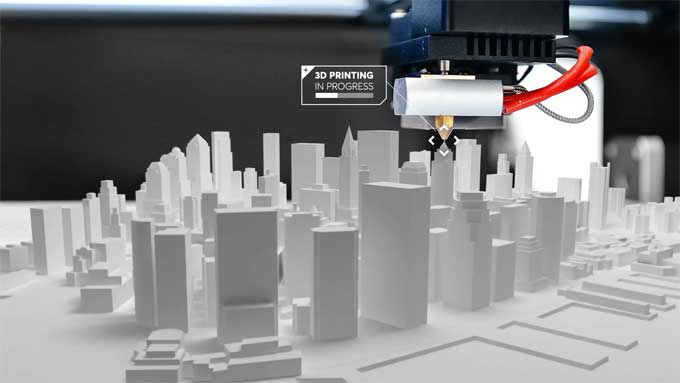
How can 3D printing help the construction industry?

The introduction of 3D printing technology is also reducing the amount of waste produced during construction. With traditional methods, large amounts of material are wasted due to inaccurate measurements or because the structure needs to be adjusted during the build. 3D printing is more precise, meaning that the exact amount of material needed can be printed, with minimal wastage.
3D printing technology is transforming the construction industry. It has the potential to revolutionize the way we build, allowing for faster construction, greater accuracy, and far lower wastage. This technology has the potential to be a game changer for a sector that is often slow to innovate.
3D Printing Application
3D printing can be used to create molds and forms that can be filled with concrete, creating structures quickly and precisely. It can also be used to print large-scale objects such as walls and roofs, reducing construction time and cost. In addition, 3D printing can be used to create complex shapes, allowing architects to design and build more intricate, imaginative structures.
3D Printing Benefits
The benefits of 3D printing do not end with construction; it is also being used to create furniture, decorations and other fittings for buildings. 3D printing enables on demand production, meaning it is possible to customize items to individual requirements quickly and cost effectively.
Less Logistical Process & Waste
A 3D printer is believed to have the potential to eliminate three major transportation logistics factors. The first problem is that many parts are damaged in transit, which can be solved by printing onsite.
Furthermore, components must be over engineered so that they can survive transportation, increasing their costs. Such over engineering would be eliminated by onsite 3D printing.
Taking care of secure transportation and hoisting requires additions to parts, requiring post assembly work. These features could be eliminated by onsite 3D printing. Additionally, 3D printing allows the raw materials to be directly molded into something, eliminating the need for wooden moulds that are often used in traditional construction.
Pipe & Electric Installation
Heating systems, insulation, running water, and electricity all require labor-intensive installation onsite in conventional construction. It is possible to integrate some of these functions into the process of 3D printing concrete.
Hollow walls require fewer materials, enhance insulation, and can potentially be used to transport hot or cold water through 3D-printed canals. Also, this method reduces waste without requiring on-site installation.
Design Process & Supply Chain
3D printing onsite simplifies the design process by eliminating several time consuming steps. Architects, engineers, contractors, clients, and executives are usually involved in the building design process.
In addition to 3D printing enhancing the architect's role, simulation techniques and modeling ensure the structural integrity of the project. As a result of 3D representations, consumers are also able to visualize the design, which allows them to make changes before the build is completed.
Create Customized House for Marketing
In today's digital age, it is possible to customize complex products at a minimal additional cost thanks to digitization of a large part of the production process.
Traditional house construction has been too expensive for many consumers, not because of the cost of the architect, but because of the need to adapt construction methods. Using 3D printing to print concrete, the shape does not affect the cost, which means more people can afford to build houses according to their specifications.
Wrapping it Up
The process of 3D printing involves creating 3D objects from digital files. The process is also known as additive manufacturing, since it adds successive layers of material to the object instead of cutting out and removing material from the object.
To learn more, watch the following video tutorial.
Video Source: ProtoFab
3D printing technology is revolutionizing the construction industry. It is reducing construction time and cost, enabling architects to design and build more complex structures, and reducing the amount of waste produced. It is clear that 3D printing is set to have a significant impact on the construction industry, and it is an exciting time to be a part of the sector.


